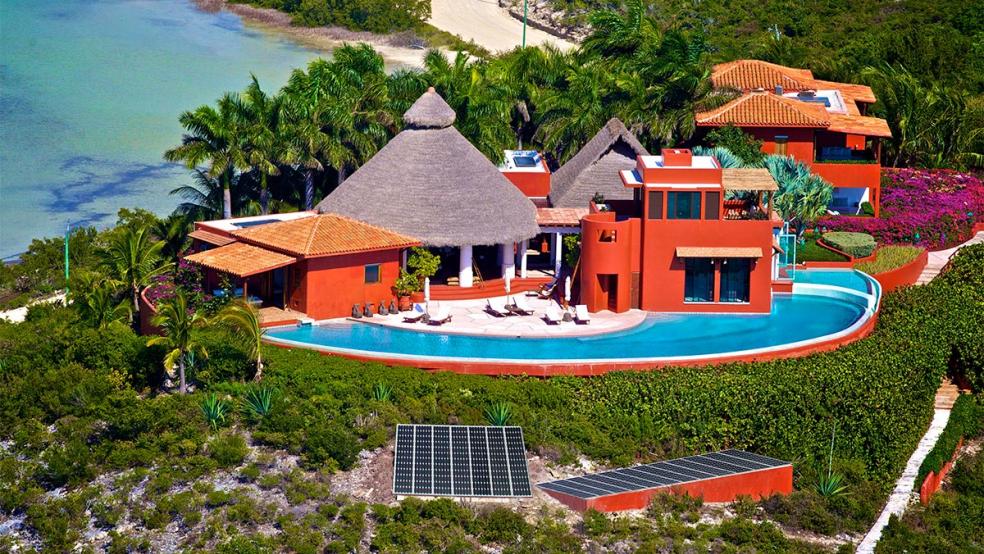Imagine owning a cozy second home at the foot of the Rocky Mountains in scenic Estes Park, Colo. Elk saunter through your backyard and you enjoy fishing and snowshoeing in the crisp fall air. Exhausted and rejuvenated, you eventually pack up and head home, locking up your vacation villa for the winter.
But Estes Park autumns can be a bit on the brisk side. Some friends of Richard Jensen, a resident of nearby Fort Collins, found that out the hard way.
Related: Best and Worst States for Paying Taxes in 2015
“Not realizing the drastic change in temperatures in the winter months, they forgot to leave the heat on when they left the house after using it September,” Jensen says. “Estes Park experienced freezing temperatures in October, and when family members went to check on the house they discovered a pipe had burst and the house was flooded with water. This resulted in an insurance claim that has exceeded $20,000 in repairs.”
Jensen, a real estate broker and vacation home owner himself, knows the reality of remote homeownership.
“It's a good idea to be on good terms with your neighbors and ask them to keep an eye on the property for you,” he says. “Otherwise, hire a property management company that will check on your home while you're not using it.”
Related: New York City's $2.5 Billion Lesson for Investors
Vacation home sales are on fire. Last year, purchases nearly doubled the combined total of the previous two years. Lawrence Yun, National Association of Realtors chief economist, says the home-away-from-home industry has benefited from a recovering economy, a rising stock market – and demographics. Baby Boomers nearing retirement are buying second homes to convert into their primary home down the road, he says.
NAR says second-home transactions topped 1.13 million last year, up more than 57% from 2013 and the highest since the association began surveying sales back in 2003. Transaction estimates are based on responses from nearly 2,000 U.S. adults who bought a residential property last year.
But investment sales are headed in the opposite direction.
“Despite strong rental demand in many markets, investment property sales have declined four consecutive years to their lowest share since 2010 as rising home prices and fewer distressed properties coming onto the market have further reduced the number of bargains available to turn into profitable rentals,” Yun says in a release.
Related: Vacation Rental Scams You Won't Believe
Many vacation home buyers think they’ll have a holiday hideaway and a source of revenue, expecting to rent out their property for a significant portion of the year. Jensen says that takes a solid buying strategy.
“In Estes Park, for example, vacation rental income is generated in the summer and fall months — late May through September — and depending on the size of the house, rates can exceed over $1,500 per week,” Jensen says. “In many cases, one week of rental can cover a monthly mortgage payment. But the reality is that not all homeowners do well renting their property. They become attached to personal items in the house, they don't want the headache of having short-term renters and they don't want to deal with repairs and maintenance.”
Potential buyers also need to consider whether they will actually take the time to use the property. Jensen says it’s a very simple cost-benefit analysis: Are you really going to spend at least two weeks out of every year living in your vacation home? Would you be better off paying for lodging for a couple weeks a year and spend time actually enjoying yourself in that vacation destination? Have you considered your monthly mortgage payment, property taxes, repairs and maintenance and the cost of travel to your home?
Related: 10 Affordable Housing Markets - on the Beach
Douglas Duncan, chief economist for Fannie Mae, says that during the financial crisis, second-home sales were depressed even more than analysts would have expected, given the demographic size and financial position of Baby Boomers. But the Boomer tide is turning.
Desirable second-home areas have seen significant price appreciation driven by the 'catch-up buying' by the boomers as the housing market and the economy have stabilized,” Duncan says.
But there is some good news for vacation-house hunters. NAR’s survey reveals prices are easing. In 2014, the median vacation home price was $150,000, down 11% from 2013. Fully 45% of vacation homes bought last year were distressed properties – either a home in foreclosure or a short sale. The typical vacation-home buyer had a median household income of $94,380 and bought a property that was a median distance of 200 miles from their primary home. Four in 10 vacation buyers bought in a beach area, 19% in the country and 17% in the mountains.
Even with moderating prices, though, Duncan says many of the best buys have already been snapped up. "The real big bargains are probably gone in the desirable locations, near the water and in the mountains [which are] back to more normal prices, as opposed to a bargain price situation," he says.
Hal M. Bundrick is a certified financial planner and contributor to MainStreet. Follow him on Twitter: @HalMBundrick
This article originally appeared in MainStreet.
10 Terms of Mortgage Industry Lingo for Potential Homeowners to Learn
Here Are the Metro Dwellers Paying America's Highest Property Taxes
Stricken With Student Loan Debt And Still Purchasing Homes?



